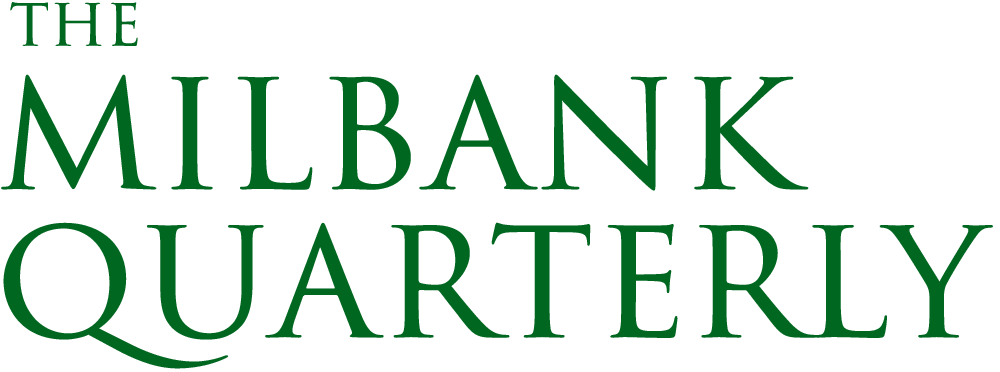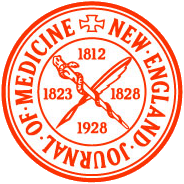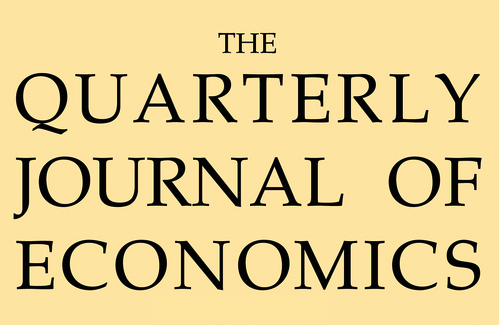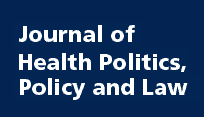|
 |
|
Adam Sacarny, Katherine Baicker Amy Finkelstein, "Out of the Woodwork: Enrollment Spillovers in the Oregon Health Insurance Experiment", NBER Working Paper No. 26871, March 2020. |
|
|
Abstract: We analyze the impact of expanded adult Medicaid eligibility on the Medicaid enrollment of already-eligible children. To do so, we exploit the 2008 Oregon Medicaid lottery, in which some low-income uninsured adults were randomly selected for the chance to apply for Medicaid. Children in these households were eligible for Medicaid irrespective of whether the household won the lottery. We estimate statistically significant but transitory impacts of adult lottery selection on children’s Medicaid enrollment: for every 9 adults who enroll in Medicaid due to the lottery, one additional child also enrolls at the same time. Our results shed light on the existence, magnitude, and nature of so-called “woodwork effects”.
|
 |
|
Katherine Baicker and Amy Finkelstein, "The Impact of Medicaid Expansion on Voter Participation: Evidence from the Oregon Health Insurance Experiment", Quarterly Journal of Political Science, 14(4): 383-400. |
|
|
Abstract: In 2008, a group of uninsured low-income adults in Oregon was selected by lottery for the chance to apply for Medicaid. Using this randomized design and state administrative data on voter behavior, we analyze how a Medicaid expansion affected voter turnout and registration. We find that Medicaid increased voter turnout in the November 2008 Presidential election by about 7% overall, with the effects concentrated in men (18% increase) and in residents of Democratic counties (10% increase); there is suggestive evidence that the increase in voting reflected new voter registrations, rather than increased turnout among pre-existing registrants. There is no evidence of an increase in voter turnout in subsequent elections, up to and including the November 2010 midterm election.
|
 |
|
Katherine Baicker, Heidi L. Allen, Bill J. Wright, Sarah L. Taubman and Amy N. Finkelstein, "The Effect of Medicaid on Management of Depression: Evidence From the Oregon Health Insurance Experiment", The Milbank Quarterly, 96: 29-56. |
|
|
Abstract: We take advantage of Oregon's Medicaid lottery to gauge the causal effects of Medicaid coverage on mental health care, how effectively it addresses unmet needs, and how those effects differ for those with and without a history of depression. Medicaid coverage reduced the prevalence of undiagnosed depression by almost 50% and untreated depression by more than 60%. It increased use of medications and reduced the share of respondents reporting unmet mental health care needs by almost 40%. There are likely to be substantial mental health consequences of policy decisions about Medicaid coverage for vulnerable populations.
|
 |
|
Katherine Baicker, Heidi L. Allen, Bill J. Wright, and Amy N. Finkelstein, "Effect of Medicaid on Medication Use Among Poor Adults: Evidence from Oregon", Health Affairs, 2017 Dec 4; 36(12): 2110-2114. |
|
|
Abstract: Using a randomized controlled design, we find that expanding Medicaid to the uninsured significantly increased use of prescription medications. The biggest increases were in medications for the management of mental health and diabetes. Individuals were also much less likely to be taking medications prescribed to someone else.
|
 |
|
Katherine Baicker, Heidi L. Allen, Bill J. Wright, Sarah L. Taubman and Amy N. Finkelstein, "The Effect of Medicaid on Dental Care of Poor Adults: Evidence from the Oregon Health Insurance Experiment", Health Service Research, 53: 2147-2164. |
|
|
Abstract: Using primary and secondary data on health care use and outcomes for participants in Oregon's 2008 Medicaid lottery, we find that Medicaid coverage significantly reduced the share of respondents who reported needing dental care or having unmet dental care needs. Medicaid doubled the share visiting the ED for dental care and the use of anti‐infective medications often prescribed for dental care, but it had no detectable effect on uncovered dental care or out‐of‐pocket spending.
|
 |
|
Amy Finkelstein, Sarah Taubman, Heidi Allen, Bill Wright, and Katherine Baicker, "Effect of Medicaid Coverage on ED Use – Further Evidence from Oregon's Experiment", New England Journal of Medicine, 2016 Oct 20; 375(16): 1505-1507. |
|
|
Abstract: Oregon’s 2008 expansion of Medicaid through random-lottery selection of potential enrollees from a waiting list offers the opportunity to assess Medicaid’s effects with a randomized evaluation that is not contaminated by confounding factors. Prior estimates from the Oregon Health Insurance Experiment showed that Medicaid increased emergency-department (ED) visits by 40% in the first 15 months after people won the lottery. This paper analyzes additional data in order to assess whether this increase represents a short-term effect that dissipates over time, as the newly insured substitute physician office visits for ED visits. We find no such decline: Medicaid coverage increased the average number of ED visits by 0.17 in the first six months of coverage and by 0.15 in the last six months (p-value of difference = .80). We also found no evidence that the newly insured are more likely to substitute doctor’s office visits for trips to the ED; rather, we found that Medicaid makes it more likely that individuals will use both types of care. For policymakers deliberating about Medicaid expansions, these results, which draw on the strength of a randomized controlled design, suggest that newly insured people will most likely use more health care across settings — including the ED — for at least 2 years and that expanded coverage is unlikely to drive substantial substitution of office visits for ED use.
|
 |
|
Sarah Taubman, Heidi Allen, Bill Wright, Katherine Baicker, Amy Finkelstein, and the Oregon Health Study Group, "Medicaid Increases Emergency Department Use: Evidence from Oregon's Health Insurance Experiment", Science, 2014 Jan 17; 343(6168): 263-268. |
|
|
Abstract: In 2008, Oregon initiated a limited expansion of a Medicaid program for uninsured, low-income adults, drawing names from a waiting list by lottery. This lottery created a rare opportunity to study the effects of Medicaid coverage using a randomized controlled design. Using the randomization provided by the lottery and emergency department records from Portland-area hospitals, we study the emergency department use of about 25,000 lottery participants over approximately 18 months after the lottery. We find that Medicaid coverage significantly increases overall emergency use by 0.41 visits per person, or 40 percent relative to an average of 1.02 visits per person in the control group. We find increases in emergency department visits across a broad range of types of visits, conditions, and subgroups, including increases in visits for conditions that may be most readily treatable in primary care settings.
|
 |
|
Katherine Baicker, Amy Finkelstein, Jae Song, and Sarah Taubman, "The Impact of Medicaid on Labor Market Activity and Program Participation: Evidence from the Oregon Health Insurance Experiment", American Economic Review: Papers and Proceedings, 2014 May; 104(5): 322-328. |
|
|
Abstract: In 2008, a group of uninsured low-income adults in Oregon was selected by lottery for the chance to apply for Medicaid. Using this randomized design and 2009 administrative data, we find no significant effect of Medicaid on employment or earnings. Our 95 percent confidence intervals allow us to reject that Medicaid causes a decline in employment of more than 4.4 percentage points, or an increase of more than 1.2 percentage points. Medicaid increases food stamps receipt, but has little, if any, impact on receipt of other measured government benefits, including SSDI.
|
|
 |
|
Katherine Baicker, Sarah Taubman, Heidi Allen, Mira Bernstein, Jonathan Gruber, Joseph P. Newhouse, Eric Schneider, Bill Wright, Alan Zaslavsky, Amy Finkelstein, and the Oregon Health Study Group, "The Oregon Experiment – Effects of Medicaid on Clinical Outcomes", New England Journal of Medicine, 2013 May; 368(18): 1713-1722. |
|
|
Abstract: Despite imminent expansion of Medicaid to low-income adults, the effects of expanding coverage are unclear. Oregon’s 2008 Medicaid expansion using lottery drawings from a waiting list provides an opportunity to evaluate the effects of Medicaid using random assignment. Approximately two years after the lottery, we collected data from 6,387 adults randomly selected to be able to apply for Medicaid coverage and 5,842 not selected. Measures included blood pressure, cholesterol and glycosylated hemoglobin; a depression screen; medication catalogs; and self-reported diagnoses, health, health care utilization and out-of-pocket spending. We use the lottery’s random assignment to calculate the effect of Medicaid coverage.We found no statistically significant effect of Medicaid on the prevalence, diagnosis, or medication of hypertension or high cholesterol. Medicaid coverage significantly increased the diagnosis of diabetes and use of diabetes medication, but we observed no significant effect on average glycosylated hemoglobin levels nor on the percent with levels >6.5%. Medicaid coverage decreased the probability of screening positive for depression (-9.15 percentage points; 95% CI: -16.70 to -1.60; P=0.018), increased use of preventive services, and almost eliminated catastrophic out-of-pocket medical expenditures. Thus, evidence using a randomized controlled design showed that Medicaid coverage generated no statistically significant improvements in measured physical health outcomes in the first two years, but did generate increased health care use, higher rates of diabetes detection and management, lower rates of depression, and lower financial strain.
Summary of Findings
Letters in Response
|
|
 |
|
Amy Finkelstein, Sarah Taubman, Bill Wright, Mira Bernstein, Jonathan Gruber, Joseph P. Newhouse, Heidi Allen, Katherine Baicker, and the Oregon Health Study Group, "The Oregon Health Insurance Experiment: Evidence from the First Year", Quarterly Journal of Economics, 2012 Aug; 127(3): 1057-1106. (Appendices) |
|
|
Abstract: In 2008, a group of uninsured low-income adults in Oregon was selected by lottery to be given the chance to apply for Medicaid. This lottery provides an opportunity to gauge the effects of expanding access to public health insurance on the health care use, financial strain, and health of low-income adults using a randomized controlled design. In the year after random assignment, the treatment group selected by the lottery was about 25 percentage points more likely to have insurance than the control group that was not selected. We find that in this first year, the treatment group had substantively and statistically significantly higher health care utilization (including primary and preventive care as well as hospitalizations), lower out-of-pocket medical expenditures and medical debt (including fewer bills sent to collection), and better self-reported physical and mental health than the control group.
Summary of Findings
|
|
 |
|
Ruohua Annetta Zhou, Katherine Baicker, Sarah Taubman, and Amy N. Finkelstein, "The Uninsured Do Not Use the Emergency Department More - They Use Other Care Less", Health Affairs, 2017 Dec 4; 36(12): 2115-2122. |
|
|
Abstract: There is a popular perception that insurance coverage will reduce overuse of the emergency department (ED). Both opponents and advocates of expanding insurance coverage under the Affordable Care Act (ACA) have made statements to the effect that EDs have been jammed with the uninsured and that paying for the uninsured population's emergency care has burdened the health care system as a result of the expense of that care. It has therefore been surprising to many to encounter evidence that insurance coverage increases ED use instead of decreasing it. Two facts may help explain this unexpected finding. First, there is a common misperception that the uninsured use the ED more than the insured. In fact, insured and uninsured adults use the ED at very similar rates and in very similar circumstances - and the uninsured use the ED substantially less than the Medicaid population. Second, while the uninsured do not use the ED more than the insured, they do use other types of care much less than the insured. |
|
|
|
|
 |
|
Heidi Allen, Katherine Baicker, Sarah Taubman, Bill Wright, and Amy Finkelstein, "The Oregon Health Insurance Experiment: When Limited Policy Resources Provide Research Opportunities", Journal of Health Politics, Policy and Law, 2013 Dec; 38(6): 1183-1192. |
|
|
Abstract: In 2008 Oregon allocated access to its Medicaid expansion program, Oregon Health Plan Standard, by drawing names from a waiting list by lottery. The lottery was chosen by policy makers and stakeholders as the preferred way to allocate limited resources. At the same time, it also gave rise to the Oregon Health Insurance Experiment: an unprecedented opportunity to do a randomized evaluation — the gold standard in medical and scientific research — of the impact of expanding Medicaid. In this article we provide historical context for Oregon's decision to conduct a lottery, discuss the importance of randomized controlled designs for policy evaluation, and describe some of the practical challenges in successfully capitalizing on the research opportunity presented by the Oregon lottery through public-academic partnerships. Since policy makers will always face tough choices about how to distribute scarce resources, we urge thoughtful consideration of the opportunities to incorporate randomization that can substantially improve the evidence available to inform policy decisions without compromising policy goals. |
|
|
|
|
 |
|
Katherine Baicker and Amy Finkelstein, "The Effects of Medicaid Coverage — Learning from the Oregon Experiment.", New England Journal of Medicine, 2011 Aug 25; 365: 683-685. |
|
|
|
|
 |
|
Heidi Allen, Katherine Baicker, Amy Finkelstein, Sarah Taubman, Bill Wright, and the Oregon Health Study Group, “What the Oregon Health Study Can Tell Us About Expanding Medicaid”, Health Affairs, 2010 Aug; 29(8): 1498-1506. |
|
|
Abstract: The recently enacted Patient Protection and Affordable Care Act includes a major expansion of Medicaid to low-income adults in 2014. This paper describes the Oregon Health Study, a randomized controlled trial that will be able to shed some light on the likely effects of such expansions. In 2008, Oregon randomly drew names from a waiting list for its previously closed public insurance program. Our analysis of enrollment into this program found that people who signed up for the waiting list and enrolled in the Oregon Medicaid program were likely to have worse health than those who did not. However, actual enrollment was fairly low, partly because many applicants did not meet eligibility standards. |













